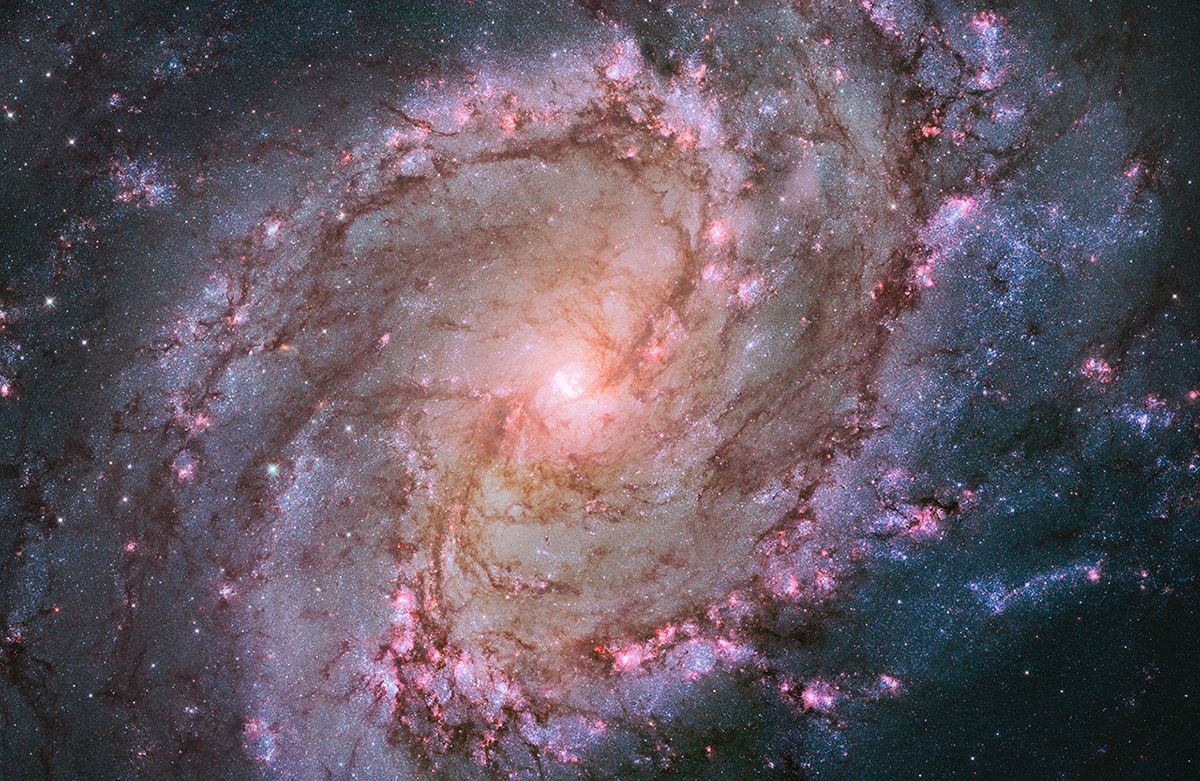Science News
Explore Galaxy M83
January 9, 2014
by Ryan Wyatt

We’re nearing the end of the 223rd American Astronomical Society meeting in National Harbor, Maryland—the largest gathering of astronomers in the world. And what major astronomy conference would be complete without a new Hubble image release?
Hubble Space Telescope teams rolled out several lovely images this week—a rich view of the spectacular Tarantula Nebula, for example, and the cosmic “zoom lens” created by a cluster of galaxies—but also a crazy-high-resolution image that citizen scientists are invited to explore!
The zoomable image of the spiral galaxy M83 (not to be confused with the great French band M83, BTW, although the galaxy inspired the band’s name) can provide hours of engagement simply exploring its 84 megapixels. But the Hubble team has partnered with the Zooniverse citizen-science gurus to create an opportunity for people to help astronomers learn about how stars form.
Brad Whitmore from the Space Telescope Science Institute described why scientists selected M83 for this project—a tremendous amount of star formation is taking place in M83, and because we see it nearly face on (from “above,” as it were), we can clearly make out the different stages of star-forming activity.
Born in clusters, stars live out their lives (from millions to billions of years) and collectively influence their surroundings. In imaging M83, with its hundreds of billions of stars, we see the whole tale of stellar lifetimes written out over the vast reaches of the galaxy—even at a distance of 15 million light years! The official NASA press release describes it well:
The Hubble photograph captures thousands of star clusters, hundreds of thousands of individual stars, and “ghosts” of dead stars called supernova remnants. The galactic panorama unveils a tapestry of the drama of stellar birth and death spread across 50,000 light-years.
Young star clusters lie along the dark spiral dust lanes seen in the image above, and the largest young stars can energize the surrounding hydrogen gas, causing it to glow pink. Those same stars eventually blow off the pink gas, revealing their bright blue light. Those young, bright, blue stars live fast and die young, however, and when they meet their demise, often explosively, the remaining stars in a cluster glow with a collectively yellow or orange hue.
How can you take part in astronomers’ exploration of this gorgeous galaxy? The project Star Date: M83 begins on Monday, January 13th, when citizen scientists will have the chance to help decode this image, looking at star clusters’ colors—from pink to blue to yellow-orange—to determine their ages. You can also simply explore the image, looking for evidence of other astronomical phenomena—supernova remnants in M83 as well as distant background galaxies or foreground stars in our own galaxy that photobombed Hubble’s picture.
(We’ve talked a bit about Zooniverse on Science Today before: “Exoplanets Everywhere” described some great discoveries from Planet Hunters, and “Citizen Astronomy” gave a run-down of Zooniverse projects about three and a half years ago, but there are many more to choose from now.)
Whether you choose to explore Hubble’s new image on your own or log into Star Date: M83 on Monday to join citizen scientists around the globe in doing so, I hope you enjoy this lush view of the spiral galaxy, with its attendant tale of star formation and evolution.
Ryan Wyatt is Director of Morrison Planetarium and Science Visualization at the California Academy of Sciences.
Image: NASA, ESA, and the Hubble Heritage Team (STScI/AURA)